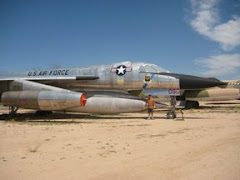I recently stopped by Costco with the intent of getting groceries, but I passed by their books and found one I thought I might like. Let me just say, I have only just begun to read it, but I am engrossed! It starts with a description of the Saturn V, the Vehicle Assembly Building at Kennedy Space Center, and the Crawler...which has continued past its use with the Saturn V to moving the Shuttle around.
The book then moves into a surprisingly interesting look at the hierarchy of NASA and how the planning for the entire Apollo 11 mission was conducted.
Can I just say, I cannot wait to read the rest? Oh, and I chose this book to try "monetizing" this site. I hope you don't mind. If you decide to buy the book, I would appreciate it if you would do it through this site, since I may get a kick back from it. Mind you, I would review this book as awesome either way. Whether I was able to monetize the site or not. I think most readers will enjoy this book...if you enjoy my site, you'll probably be interested in the book. Enough said.
So, I never did let you all in on my trip to the Yakima Firing Center. I traveled to a nearby gas station and met my ride. We got through the gates with no problem as I was his guest. We then switched vehicles and proceeded out to the range to try an locate #42-54295.
#42-54295 was an RA-24B...or the Army's version of the SBD Dauntless. This particular one was used to tow targets for the 40mm Bofor's range. I found pictures of some of 42-54295's siblings and it looks as though they were all used in the South Pacific for a time. They were withdrawn from combat to service in the states because they were slow and lightly armed.
The story of 54295 will be written up in the near future. I had hoped to have photographic proof of me finding the site, though.
On this particular outing, though, we hiked around several acres looking for the remains of a crash. All we found were some machine gun bullets and some used smoke grenades.
We hiked around for a couple hours with few other discoveries. Still, the entire time we were there, some Strykers were firing their 105mm canon. BOOM!!!! and a couple minutes later- BOOM!!!! It was awesome!
not my photo, borrowed this from the globalsecurity.org site.
We also viewed from a great distance, the area where F-104C #57-912 came to rest. Unfortunately, it was within the Main Impact Zone...no walking among potentially unexploded ordnance. I don't mind keeping all my limbs, so I did not complain.
Still, the bonus was to drive by three Hummers that had .50 caliber machine guns mounted on their tops...they were firing!!!!!! BAM BAM BAM BAM BAM BAM BAM BAM BAM BAM BAM BAM BAM BAM BAM BAM BAM!!!!!!!!! It was AWESOME!!
Below are some C-rations that had been left behind who knows how many decades ago.
We also happened upon this gentle soul.
I have an invitation to go out and try to locate another site sometime soon...I hope to take him up on this invitation as soon as I get the accident report.









